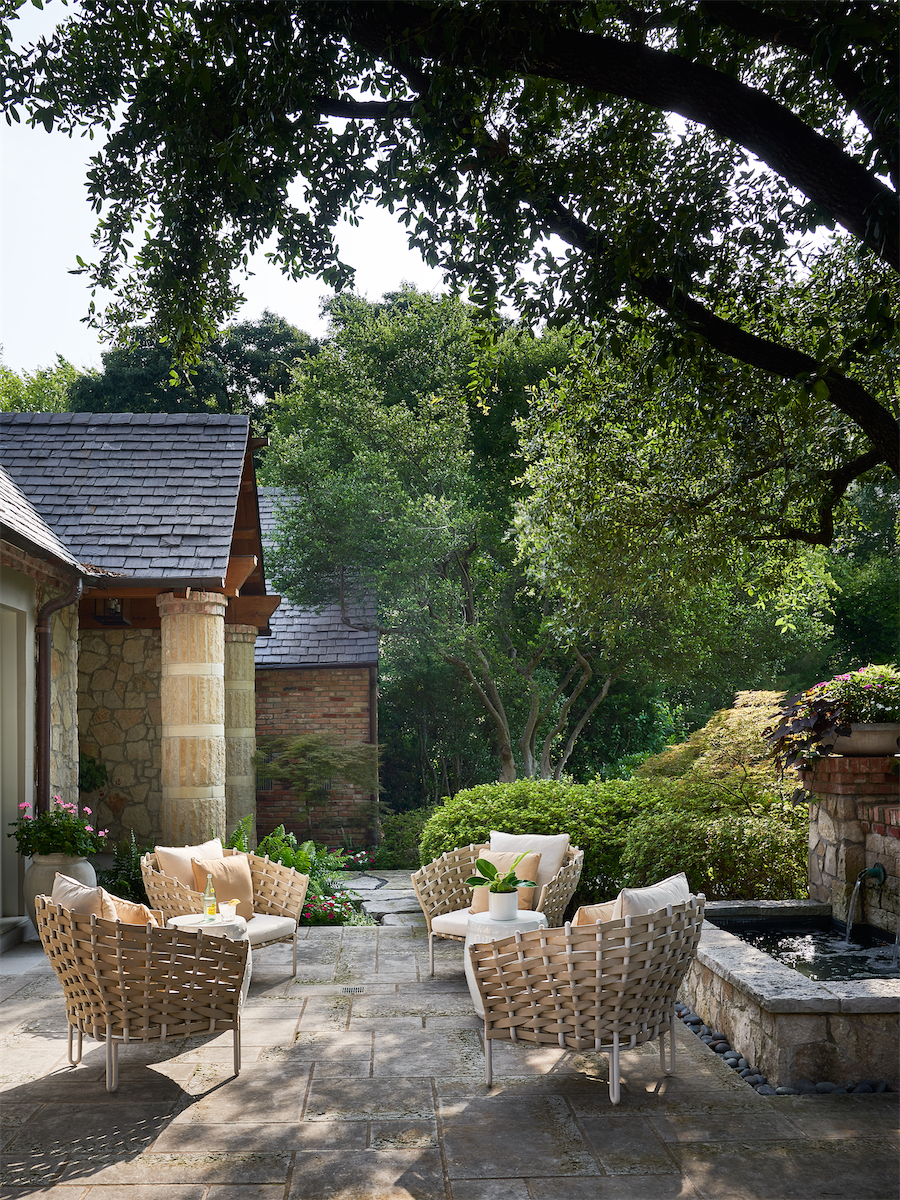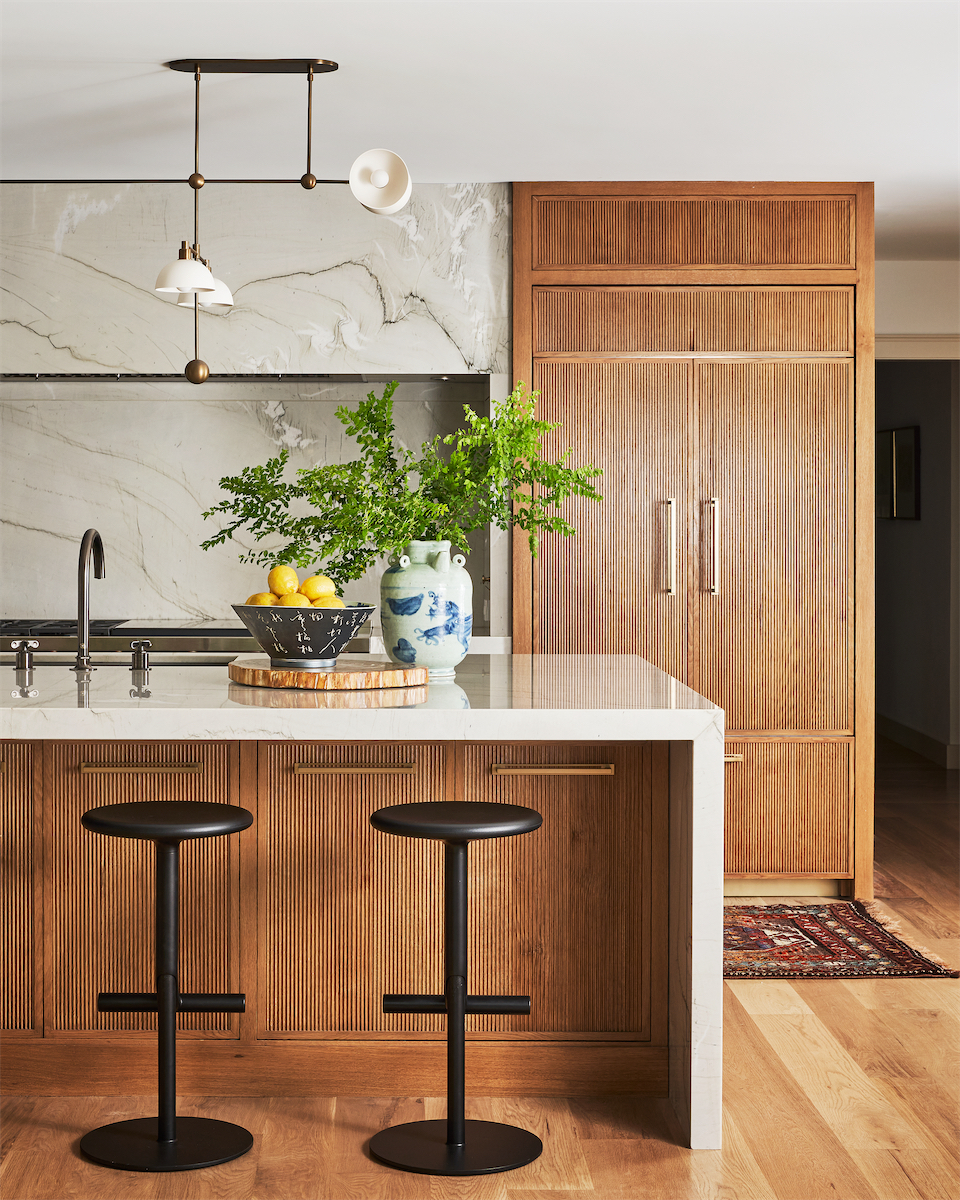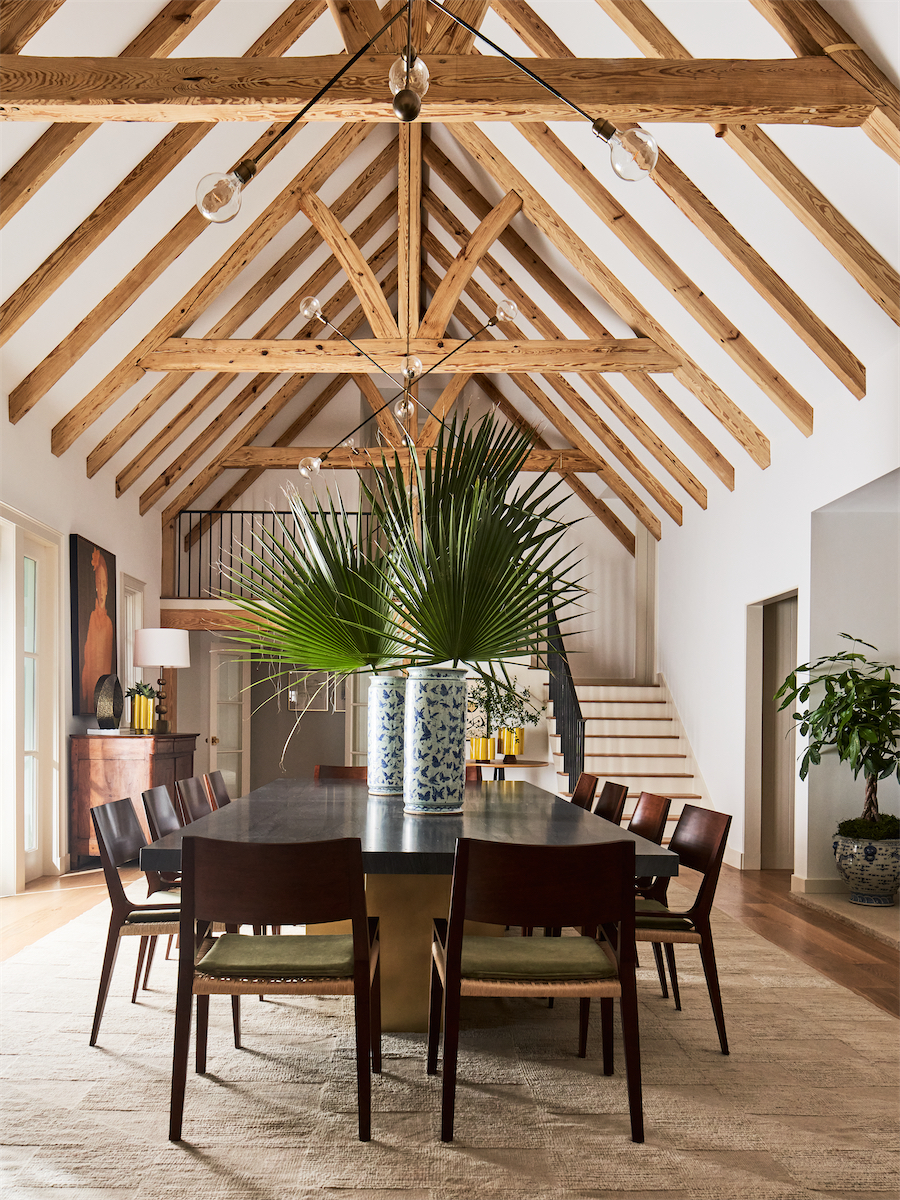A Hidden Charles Dilbeck Home Undergoes a Stunning Refresh in Dallas
Designer Philip Thomas Vanderford Led the Preservation and Rejuvenation of the Bluffview Charmer
BY Rebecca Sherman // 03.06.24Shrouded by a heavily wooded ravine in Bluffview, a hidden house designed in 1935 by famed architect Charles Dilbeck undergoes a stunning renovation. (Photo by Stephen Karlisch)
Designer Philip Thomas Vanderford recalls the first time he saw his client’s house in Bluffview. “I pulled up to the gate, and I could barely see the house,” he says. “The front yard was like a football field.” Set at the far end of almost two acres of manicured lawn, the rambling stone-and-brick residence nestles into a heavily wooded ravine. He was astonished at the solitude.
“You don’t see anything else — no other houses, no power lines, or the street. You forget you are in the middle of the city. It’s special for Dallas.”
Designed in 1935 by legendary architect Charles Dilbeck, the house’s secluded setting also makes it one of the city’s best-kept secrets.

The Charles Dilbeck Allure
Few old houses in Dallas are as prized as Dilbeck’s charming and impeccably crafted dwellings, which feature quaint and quirky details such as round towers and irregular rooflines dotted with brick chimneys and cupolas. Dilbeck’s architecture often included exteriors clad in rough fieldstone, half-timbering, asymmetrical “drunken brick” masonry, and Dutch “klinker” bricks, which have a blackened appearance and are often misshapen or split. Throughout a career that began in Tulsa and spanned from 1932 to 1969, Dilbeck worked primarily in the French Norman and ranch styles, designing hundreds of houses in Dallas and the Park Cities, ranging from cottages to estates.
His French Norman country cottages were romanticized interpretations of the traditional French farmhouse, with steeply pitched slate roofs and timbered, vaulted ceilings. Almost 90 years ago, Dilbeck built a similar two-bedroom house in Bluffview for Dorothy and James Walton, the manager of a wrecking and trading company, back when the area was still rural and years away from being annexed to Dallas.
In 1941, Dilbeck drafted expansion plans for a subsequent owner, although it’s not clear if those were made. The house was enlarged at least twice, most recently in the early 2000s, according to author and researcher Willis Winters, an expert on all things Dilbeck, who toured it in 1997. “It was a memorable house, just very special, with an extraordinary feeling inside,” Winters says. He was struck by Dilbeck’s complex interiors, including a bi-level living room with a staircase, a 20-foot-high vaulted ceiling, wood beams, a massive stone fireplace, and an expansive window overlooking the natural setting.
Changes made over the years include the addition of a primary bedroom wing, which was later remodeled by architect Ralph Duesing and builder Randy Clowdus, both known for historic renovations. “A significant portion of the original house has been retained and incorporated into a much larger residence, with many key Dilbeck features intact,” Winters says. This house, along with Dilbeck’s full body of work, will be included in a book he’s writing, slated for publication in 2026.

Preservation and Rejuvenation
The current owners — a couple with two grown kids — had been living in the house for a decade before taking the plunge in 2021 to preserve and refresh it. “She wanted to be respectful of its history, but it also needed to be functional for the family — it was about balancing the two,” says Vanderford, principal and founder of interior design firm Studio Thomas James. The kitchen and bathrooms hadn’t been updated in decades, while other rooms had never been touched — some with the original wiring inside the walls.
Vanderford enlisted Grant Lloyd of Lloyd Construction Consultants to help modernize the house while also rejuvenating Dilbeck’s original design elements, including plaster walls. The timber ceiling beams, faux-finished some 15 years earlier, were sanded down to reveal the original white oak. They built new doors, molding, and hardware using an original Charles Dilbeck door as a model, and they were careful to restore the study’s massive limestone fireplace with similar stone.
“It doesn’t feel like a house that’s been redone — you can’t tell what is old and what is new,” Vanderford says.

Don’t Compete With Dilbeck
Rule one when decorating a Dilbeck: Don’t compete with the architecture. A light touch goes a long way, and Vanderford’s understated approach is just what the Bluffview house cried out for. “We wanted the interiors to be subtle, and we didn’t want to upstage the views,” he says.
A palette of greens, bronzes, and browns was pulled from the prodigious natural world flourishing just outside the windows, and they made judicious use of the color black as a way to ground rooms with cathedral ceilings and heavy timbers. Custom cabinetry and other millwork add to the house’s elegantly crafted feel.
“They are casual people; they wanted things that felt elevated and beautiful, but also felt relaxed,” Vanderford says.
In the living room you’ll find rich materials like a bronze and alabaster chandelier by Jonathan Browning; a Barchi rug from Abrash, hand-knotted from soft wool in Afghanistan; Thomas Pheasant’s mahogany-and-brass lounge chairs for Baker, which Vanderford says “have a strong sculptural presence, like art”; and an iron cocktail table studded with iron birds from George Cameron Nash that references the wooded landscape around the house. The black-linen sofa and daybed designed by Kara Mann for Baker have unexpected woven leather details that bring a sense of casual, he says.
Dilbeck’s original living room — a vaulted bi-level space with staircase leading to a pair of bedrooms — is now being used as a dining area. The owners love to host dinner parties, and a bigger table that seats 12 — set in this show-stopping space — makes a dramatic statement for entertaining. Vanderford designed the table’s black-marble top and brass base to give balance to the high ceilings and timbers, and he replaced the previous ornate iron chandeliers with lighting pendants by Apparatus that almost disappear into the rafters.
“They let Dilbeck’s beams be the star,” he says.






































_md.jpg)







